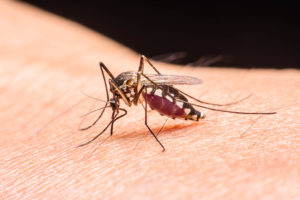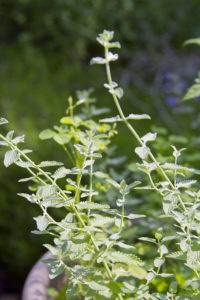In the past, my first response was to swat that pesky bug flying around my head. Now a Buddhist, I try to avoid killing whenever possible, so I look for other ways to repel insects and bugs. With summer’s arrival, the spring storms created the perfect breeding ground for creepy critters, specifically the malaria, West Nile and Zika carrying mosquito.  So how do you protect yourself from the risk of disease that a bug carries and the risk of health problems that your repellent may offer? We wanted to find out just what was included in some of the more common repellents, the risks, and possible alternatives to give you a head start into enjoying a bug free summer.
So how do you protect yourself from the risk of disease that a bug carries and the risk of health problems that your repellent may offer? We wanted to find out just what was included in some of the more common repellents, the risks, and possible alternatives to give you a head start into enjoying a bug free summer.
Chemicals
DEET – the most notorious chemical used in bug repellents is the pesticide, DEET. Yep, you read that right, you are putting a “pesticide” on your skin directly when using a DEET product. It has even been reported that DEET is so dangerous that it is recommended you wash it off immediately after returning back inside.
Picaridin – created by Bayer AG in the early 1980’s, picaridin is not known to irritate the skin and eyes and does not have the bold odor that DEET does. In addition, it does not dissolve plastics and evaporates from the skin more slowly than DEET or IR3535 giving it a longer period of repellent effect.
Chemical IR3535 – has gained popularity over the years as DEET continues to strike fear in those running from bugs. Chemical IR3535 is a synthetic insect repellent that was used in Europe for over 20 years before getting approval by the EPA in 1999.
Health Effects
While each repellent and chemical can have different impacts on your health, here are some common factors that have been reported as symptoms of using said sprays.
- Breathing Difficulty
- Coughing
- Upset Stomach
- Vomiting
- Nausea
- Low Blood Pressure
- Tremors
On of the most serious and devastating complications of using DEET is the potential for neurological damage in young children. Patients have reported disorientation, clumsiness, seizures and even death when using this chemical.
Repellent Alternatives
Finding a safe alternative to preventing bug bites and the innate risk they pose on their own can be tough, but not impossible. Standing water serves as a breeding ground for mosquitoes, anything from a birdbath to a decorative planter can hold mosquito larvae and cause them to infest your patio or garden area with only inches of water.  We recommend draining them during the hot summer months to avoid the inconvenience these flying creatures may bring to your environment. Many companies have begun providing alternative options for bug sprays over the years, including natural spray options, organic dunks, candles, bug nets and even oils. Here are some of the top ways to battle your bug problem without lathering yourself in pesticides.
We recommend draining them during the hot summer months to avoid the inconvenience these flying creatures may bring to your environment. Many companies have begun providing alternative options for bug sprays over the years, including natural spray options, organic dunks, candles, bug nets and even oils. Here are some of the top ways to battle your bug problem without lathering yourself in pesticides.
- Clothing – an easy way to help avoid being bit when outside is to cover up. Wearing a light long sleeve shirt gives you a level of protection and can often deter insects from seeking a landing pad on your skin.
- Candles –
 Citronella candles have been on the market for a long time, and in addition to these fragrant candles, many other alternatives are available such as tiki torches and other alternatives leveraging this natural deterrent.
Citronella candles have been on the market for a long time, and in addition to these fragrant candles, many other alternatives are available such as tiki torches and other alternatives leveraging this natural deterrent. - Oils – Cinnamon oil in particular has recently gained a spot light in it’s ability to fight back bug bites providing a layer of protection that is natural and safe.
 Bergamot, lavender, tea tree, lemon eucalyptus and cedar oils also keep the bugs at bay and are the most common additives to homemade bug repellents. Simply mix 50-60 drops of essential oils in a dark, glass spray bottle with 4 ounces of witch hazel and 4 ounces of distilled or boiled water, shake well before spraying on clothes or outdoor areas and do not swallow.
Bergamot, lavender, tea tree, lemon eucalyptus and cedar oils also keep the bugs at bay and are the most common additives to homemade bug repellents. Simply mix 50-60 drops of essential oils in a dark, glass spray bottle with 4 ounces of witch hazel and 4 ounces of distilled or boiled water, shake well before spraying on clothes or outdoor areas and do not swallow. - Avoid Sweet Scents – bugs are attracted to their natural food sources, which often times include sweet scented plants.
- Use Nature – If you have a garden and spend a lot of time outside, then why not leverage the natural repellents you have at your disposal?
 Plants such as Geranium, marigold, catnip and horse mint are all considered bug-repelling plants and work great in any outdoor garden or planting area.
Plants such as Geranium, marigold, catnip and horse mint are all considered bug-repelling plants and work great in any outdoor garden or planting area.








Leave a Reply